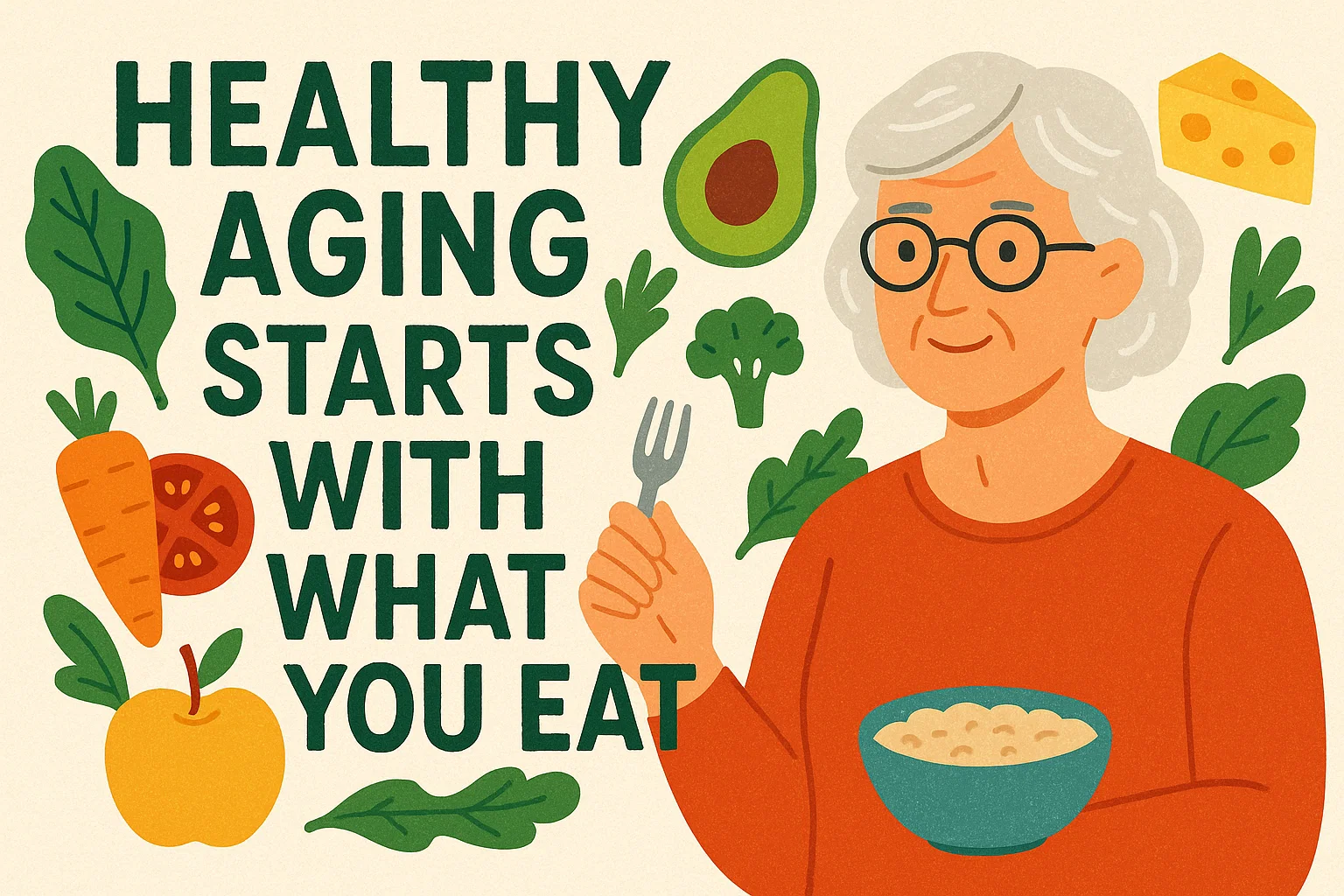At the heart of dietary influence on aging lie molecular sensors that gauge nutrient levels and orchestrate cellular fate. The mechanistic target of rapamycin (mTOR) senses amino acids and growth factors, promoting protein synthesis and cell proliferation when active. In contrast, AMP-activated protein kinase (AMPK) detects low energy states, when calories are scarce, and shifts cells into conservation mode: boosting autophagy (cellular self-cleaning), enhancing mitochondrial repair, and tightening antioxidant defenses. Sirtuins, a family of NAD⁺-dependent enzymes, further integrate signals from calorie availability to modulate gene expression, DNA repair, and metabolic efficiency.
Strategies such as moderate protein reduction, time-restricted eating or periodic calorie restriction can tip the balance toward AMPK and sirtuin activation, encouraging maintenance and repair over unchecked growth.

Macronutrients: Quality over quantity
Proteins: While essential for muscle preservation and immune health, excessive intake, especially of red and processed meats, can chronically stimulate mTOR, accelerating cellular wear. Opt for modest portions (0.8–1.0 g/kg body weight) from plant sources (legumes, nuts, tofu) and fatty fish rich in omega-3 fatty acids, which also quell inflammation.
Carbohydrates: Emphasize unrefined, fiber-dense carbs, whole grains, fruits and vegetables, that provide steady glucose release, minimize insulin spikes, and deliver micronutrients. High-glycemic foods foster glycation end products and oxidative stress, both linked to faster biological aging.
Fats: Prioritize monounsaturated (olive oil, avocados) and omega-3 polyunsaturated fats (chia seeds, salmon) which support cell membrane integrity, hormone balance and anti-inflammatory eicosanoid production. Limiting trans fats and excessive omega-6s maintains a healthier inflammation profile.
Phytochemicals and antioxidant networks
Plants bristle with polyphenols, like resveratrol in grapes, quercetin in apples and epigallocatechin gallate in green tea, that activate sirtuins and Nrf2, bolstering the body’s own antioxidant machinery. These compounds also influence gut bacteria, favoring species that produce short-chain fatty acids, which feed colon cells and help regulate systemic immunity. A diet rich in colorful produce ensures a broad spectrum of these bioactives to reinforce cellular defenses.
Gut microbiome: Diet’s hidden ally
The trillions of microbes in our intestines shape inflammation, nutrient absorption and even gene expression. Diets high in fermentable fiber, found in garlic, onions, leeks, beans and whole grains, promote beneficial bacteria that generate butyrate, a short-chain fatty acid shown to strengthen the gut barrier and reduce inflammation. In contrast, diets heavy in saturated fats and low in fiber can drive dysbiosis, endotoxemia and chronic immune activation.
Emerging insights from our article on the impact of microbiome on aging highlight how specific dietary fibers and fermented foods modulate microbial communities to support longevity-associated pathways (insight.tomorrow.bio/articles/impact-of-microbiome-on-aging).
Evidence from human trials and populations
Several dietary patterns have been linked to longer lifespans and lower incidence of age-related diseases:
Mediterranean diet: Characterized by olive oil, vegetables, legumes, nuts, fish and moderate wine intake, this pattern is associated with reduced cardiovascular events, preserved cognitive function and lower frailty indices across large cohorts.
Blue Zones eating habits: In regions where centenarians abound, meals center on beans, whole grains and seasonal produce, with minimal meat and processed foods. Practices like “hara hachi bu” (eating until 80 percent full) in Okinawa align with calorie moderation and delayed metabolic aging.
Time-restricted eating: Limiting daily food intake to a window of 8–10 hours has shown improvements in insulin sensitivity, blood lipids and markers of inflammation, mirroring benefits observed in intermittent fasting studies.
Our exploration of dietary patterns that promote longevity details how combining nutrient timing, portion control and food quality yields compounded effects on cellular repair and metabolic flexibility (insight.tomorrow.bio/articles/dietary-patterns-that-promote-longevity).
Micronutrient vigilance
Vitamins and minerals underpin countless enzymatic reactions involved in DNA repair, antioxidant defense and mitochondrial energy production. Deficiencies in vitamin D, vitamin B12, magnesium and zinc correlate with sarcopenia, cognitive decline and immune dysregulation. Routine assessments, through dietary tracking and blood analyses, can identify gaps, allowing targeted supplementation to reinforce essential cofactor pools.
Targeted supplements as adjuncts
When diet alone cannot deliver optimal levels, select supplements may help modulate aging pathways:
NAD⁺ precursors (nicotinamide riboside): Boost sirtuin activity and mitochondrial function.
Berberine: Activates AMPK, improving glucose metabolism and autophagy.
Polyphenols (quercetin, fisetin): Exhibit senolytic activity, clearing dysfunctional cells in preclinical studies.
While promising, these should complement, not replace, a foundational whole-food approach and be guided by emerging human evidence.
Practical roadmap for everyday eating
Vegetable foundation: Fill half your plate with a rotating selection of colorful vegetables.
Smart grains: Swap refined grains for quinoa, barley or steel-cut oats.
Plant-forward protein: Emphasize beans, lentils, nuts and fatty fish; reserve red meat for occasional enjoyment.
Healthy fats: Drizzle extra-virgin olive oil, snack on seeds and avocado.
Hydration and fermented fare: Water, herbal teas and a daily serving of yogurt or sauerkraut support digestion and microbiome health.
Mindful timing: Aim for a 10–12 hour overnight fasting window to engage repair pathways.
About Tomorrow.bio
At Tomorrow.bio we are dedicated to advancing the science of cryopreservation with the goal of giving people a second chance at life As Europe’s leading human cryopreservation provider we focus on rapid high-quality standby, stabilization and storage of terminal patients preserving them until future technologies may allow revival and treatment.
Our mission is to make human cryopreservation a reliable and accessible option for everyone We believe that no life should end because current capabilities fall short.
Our vision is a future where death is optional where people have the freedom to choose long-term preservation in the face of terminal illness or fatal injury and to awaken when science has caught upInterested in learning more or becoming a member
📧 Contact us at hello@tomorrow.bio
🌐 Visit our website www.tomorrow.bio
🤝 Schedule a call with our team Book a consultation



